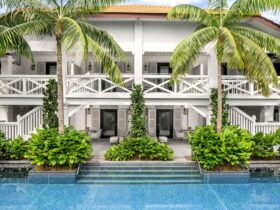
It may not be a coveted first-tier city, but Lijiang’s natural and cultural legacy is world class. Frank young shows us why
About 150km from the border of Myanmar, in the South-western part of China, lies Lijiang. Approximately 30 times the size of Singapore and with 1.22 million people, there’s plenty of room for everyone.
One of the reasons for its low population density is, perhaps, its remote location. Fortunately for Singaporeans, there is now a four-hour direct flight from Changi on TigerAir.

Like the Phoenix from the Ashes
In 1996, Lijiang was struck by a major earthquake measuring 7 on the Richter scale. In its aftermath, much of the city was rebuilt according to safer building codes.
Many of the hotels are new, clean and stylish to accommodate their newest industry – tourism. Quite a number of the city hotels are only a short walking distance from the main attraction – the Old Town.
Much of the rigid structures of the Old Town – walls, streets and ceilings – fell during the earthquake. Except for the rare few buildings, which remain intact, most of the Old Town had been restored to preserve the original experience.
Even the cobblestone streets have been replaced. Ironically, the new ones have rough surfaces, while the old ones had been smoothened from hundreds of years of foot traffic.
After the earthquake, all the new buildings were restricted in height. As a result, Jade Dragon Snow Mountain, Lijiang’s second main attraction, still graces Lijiang’s skyline.

World-Class Cultural Heritage
The Old Town emerged some 800 to 900 years ago. It gained importance over the years as the Southern centre for silk embroidery trading. As part of the Southern Silk Route, caravans of horses, on two-year journeys, plied through the Old Town carrying commodities to places such as Tibet and Iran.
Today, the descendants of those horses carry quarry of a different nature – cash paying tourists. If horseback riding is not your thing, the town is a great place to meander on foot.
There are hundreds, if not thousands of shops, tastefully enclosed within “ancient” shop houses, offering drinks, souvenirs, local street food, and different ethnic cuisines.
One of the most popular items with tourists is the rose petal biscuit. It’s like a tau sar piah with rose petal paste filling. It is sweet and dry, and with a mild scent of rose in every bite.
The Old Town is quite large since it is designed to accommodate legions of domestic tourists during “Golden Week” [the Lunar New Year holiday period] and school holidays. I would recommend spending an afternoon and evening there, as the place looks quite different when the sun goes down.
During daylight, the town appears more ancient. However, at night, thanks to electricity, the town twinkles like a big Christmas tree.
Built on a slope, the Old Town’s well-lit rooftops seem to cascade from the hilltop down to the town centre. There are many places to eat and many interesting types of food to try such as bamboo-stuffed rice, stir-fried sparrow, sautéed tofu, and many others.
Visit “Bar Street”, a side alley within the Old Town teeming with bars, loud karaoke music and hostesses in beautiful and elaborate traditional costumes, enticing weary travellers to quench their thirst. Like Old Town, I suspect this tradition hasn’t changed for centuries either.
Despite its outward rowdiness, “Bar Street” is clean and feels very safe. But, it is not without controversy.
Lijiang’s significance in history and the preservation of the Old Town have helped it to claim a respectable status as a UNESCO World Heritage site. However, “Bar Street” remains a thorn in its respectability.
The bar scene, loud music and touting are quite fun for tourists but belittle Old Town’s cultural significance, and threaten its heritage status. Subsequently, regulations have been created to curb the noise and to comply with cultural standards.
Now, I wonder if the hostesses’ costumes were simply a tactic of compliance. Whatever the reason, it’s a great photo opportunity.

Breath-taking Performance & Scenery
After you have your fill of the Old Town, visit the Jade Dragon Snow Mountain Park. One of the attractions within the national park is a theatrical production, “Impressions Lijiang” by Zhang Yimou, the famous director of films such as Red Lantern, Hero, as well as the Beijing Olympics opening ceremony.
At 3,500m above sea level, the outdoor theatre uses the sweeping mountainous panorama as its backdrop. Within this awe-inspiring setting, a cast of hundreds recreates the traditions and lifestyles of the Naxi, Yi and Bai natives of the area in song and dance. This is indeed a unique experience not to be missed.
A short bus, then cable car, then electric buggy ride bring you to a meadow by the mountain.
With the iconic mountain up close, visitors can rent flamboyant traditional costumes for selfies, or simply enjoy the awesome view from this vantage point.
For golfers, the park also offers a world-class Jade Dragon Snow Mountain Golf Course, with the mountain as a backdrop. At that height, the thinner air produces less resistance on the ball. Golfers should be able to enjoy 10 per cent greater distance with every stroke.
Other than these wonders of Lijiang, there are many other cultural and natural attractions worth discovering. If you are new to travelling in China and want a carefree vacation, join a tour such as the ones offered by ASA Holidays. Their friendly and knowledgeable guides will add further value to your Lijiang experience.
ADVERTISEMENTS








